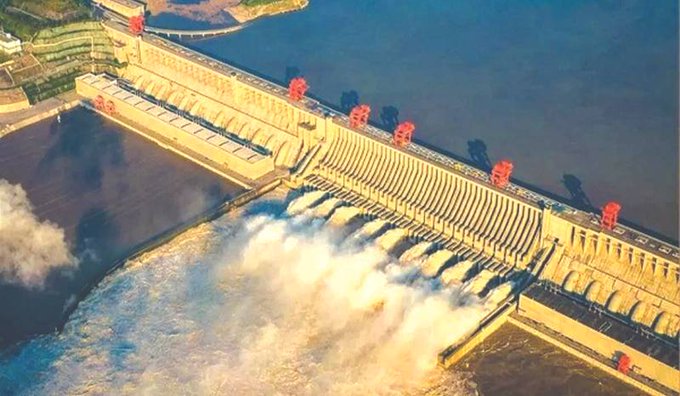China has officially started building what is being described as the world’s largest hydropower dam on the Brahmaputra river, known as the Yarlung Zangbo in Tibet. This ambitious project, worth about $167 billion, is located close to the Indian border in Arunachal Pradesh and is set to surpass even China’s famed Three Gorges Dam in scale and electricity generation. The dam is designed with five cascade hydropower stations and aims to produce a staggering 300 billion kilowatt-hours of electricity each year, similar to the annual consumption of the entire United Kingdom.
Geography and Scale of the Project
The dam is being constructed at a dramatic gorge where the Brahmaputra makes a sharp U-turn around the towering Namcha Barwa peak, called the “Great Bend.” The location has immense hydroelectric potential because the river drops nearly 2,000 metres over only 50km, creating one of the world’s deepest canyons and a perfect spot for such a large-scale power project. The completed dam is expected to facilitate major advances in China’s effort towards carbon neutrality and economic development in Tibet.
Indian and Neighbourhood Concerns
The news of the construction has sparked immediate alarm in India and Bangladesh, both of which lie downstream on the Brahmaputra. Indian authorities and local communities are particularly worried, as the mighty Brahmaputra is a lifeline for millions of people in Assam, Arunachal Pradesh, and further downstream. The river sustains not just drinking water and agriculture but also powers the local economy with its rich sediment and biodiversity.
Indian officials have expressed their reservations to China through diplomatic channels. The main fear is that China’s control over the river upstream could allow it to manipulate water flow. If excess water is released during monsoons, it could trigger severe floods in India’s northeast—a region already known for devastating annual deluges. On the other hand, reducing water flow during dry months could hamper agriculture, damage hydropower generation, and reduce groundwater reserves, threatening the livelihoods of millions.
Ecological and Seismic Hazards
Environmentalists and scientists are worried about the region’s fragile ecology. The area hosts diverse and unique wildlife, including the Kaziranga National Park, famous for the endangered one-horned rhinoceros. Sudden changes to the river’s flow, disruption of sediment transport, and altered flood cycles could endanger fish migration, soil fertility, and entire ecosystems along the river’s course.
Additionally, the dam is being erected in a highly seismic zone prone to strong earthquakes, which brings significant disaster risks. Past disasters, such as the 1950 Assam-Tibet earthquake, have shown how vulnerable this region is to natural calamities. Experts warn that any mishap like an earthquake or dam failure could cause catastrophic floods and large-scale population displacement both in China and in downstream countries.
Perspectives From Indian Leaders
Assam Chief Minister Himanta Biswa Sarma recently remarked that there are two scientific views on the dam’s impact. While some experts warn of increased risk of drought and biodiversity loss, others suggest that regulated flows from the dam could help reduce flooding in Assam. The final effect, he said, can only be determined once the dam is built and functioning. He also highlighted that the Brahmaputra receives a sizable portion of its water from Indian tributaries, lessening fears of immediate drastic impact, but agreed the issue needs cautious monitoring.
China’s Response
China has repeatedly assured that the dam would not negatively impact downstream countries. Chinese officials said the project had undergone scientific reviews and will focus only on producing clean energy, mitigating disasters, and improving climate resilience in the region. China has also agreed to communicate with lower riparian countries, but trust remains low in India due to experiences from other transboundary rivers.
Strategic and Diplomatic Responses
Faced with China’s new project, India is considering speeding up its own hydropower projects on the Brahmaputra, particularly in Arunachal Pradesh, to help act as a buffer in times of sudden changes in the river’s flow. The Indian government continues to monitor the situation closely and conduct scientific studies to assess and mitigate possible impacts. Both countries, however, are not signatories to the 1997 United Nations Convention governing the use of international rivers, making formal water-sharing agreements and dispute resolution more complex.


